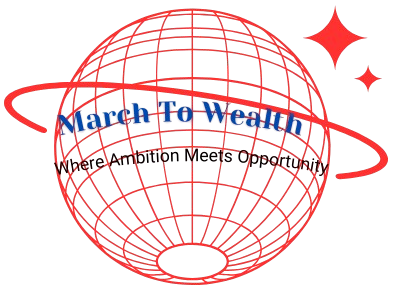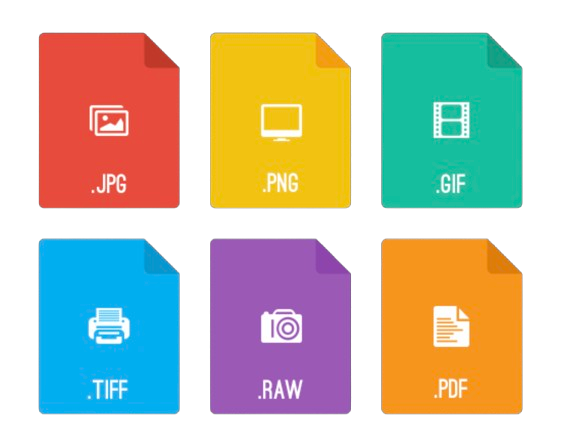Why Image Format Choice Matters More Than Ever
In today’s fast-paced digital world, website speed and user experience directly impact SEO rankings, conversions, and bounce rates. Studies show:
- 53% of mobile users abandon sites that take longer than 3 seconds to load (Google).
- Images account for ~50% of a webpage’s total weight (HTTP Archive).
- Google’s Core Web Vitals penalizes slow-loading pages.
Choosing the right image format isn’t just about aesthetics—it’s a critical performance decision.
Deep Dive: How Each Format Works (Technical Insights)
1. JPEG (Joint Photographic Experts Group)
- How it works: Uses lossy compression by merging similar pixels. Higher compression = smaller size but more quality loss.
- Best practice: Use for photos with gradients (e.g., product images, banners). Avoid for text-heavy graphics (blurs edges).
2. PNG (Portable Network Graphics)
- How it works: Lossless compression preserves exact pixel data. PNG-8 (256 colors) vs. PNG-24 (16 million colors).
- Best practice: Ideal for logos, screenshots, and images requiring transparency (e.g., watermarks).
3. WebP (Google’s Next-Gen Format)
- How it works: Combines lossy and lossless compression. Uses predictive coding for smaller files.
- Best practice: Replace JPEG/PNG for all web images where supported (saves 25-35% file size).
4. AVIF (AV1 Image File Format)
- How it works: Based on video compression tech (AV1). Delivers superior quality at half the size of JPEG.
- Best practice: Future-proof choice for high-resolution images (if targeting Chrome/Firefox users).
5. SVG (Scalable Vector Graphics)
- How it works: XML-based vectors (math equations, not pixels). Infinitely scalable without quality loss.
- Best practice: Use for logos, icons, and simple illustrations.
Real-World Case Study: Format Impact on Load Time
A/B test results from Smashing Magazine:
| Format | File Size | Load Time (3G) | SEO Impact |
|---|---|---|---|
| JPEG | 250 KB | 2.5s | 🟡 Medium |
| PNG | 400 KB | 4.1s | 🔴 Poor |
| WebP | 150 KB | 1.8s | 🟢 Excellent |
| AVIF | 80 KB | 1.2s | 🟢 Best |
Key takeaway: Switching from PNG to WebP reduced load time by 56% and improved SEO scores.
Pro Tips for Advanced Optimization
- Hybrid Approach:
- Use WebP for most images, fall back to JPEG/PNG for unsupported browsers (via
<picture>tag).
- Use WebP for most images, fall back to JPEG/PNG for unsupported browsers (via
- CDN & Lazy Loading:
- Serve images via CDNs like Cloudflare for faster delivery.
- Add
loading="lazy"to offscreen images:
- Automated Tools:
- ShortPixel (WordPress plugin for bulk optimization).
- Squoosh.app (Free WebP/AVIF converter by Google).
Common Myths Debunked
❌ “JPEG is always the best for photos.”
✅ Truth: WebP/AVIF often outperforms JPEG in quality and size.
❌ “SVG is only for logos.”
✅ Truth: SVG works for any vector graphic (e.g., infographics, animations).
❌ “AVIF isn’t ready for mainstream use.”
✅ Truth: Over 85% of global browsers now support AVIF (CanIUse).
Future of Image Formats: What’s Next?
- JPEG XL: A potential successor to JPEG (better compression, no royalties).
- AI-Optimized Images: Tools like Cloudinary AI auto-crop/resize images.
- 3D/AR Formats: USDZ (Apple) and glTF for immersive web experiences.
Final Checklist: How to Choose the Right Format
- Photos/Complex Images: WebP > AVIF > JPEG.
- Logos/Text Graphics: SVG > PNG.
- Transparency Needed: PNG (if WebP/AVIF unavailable).
- Animation: GIF (simple) or MP4 (complex).
When choosing between image formats for your landing page, the key factors are optimization (file size vs. quality), loading speed, and compatibility. Here’s a breakdown of the best formats for different use cases:
1. JPEG (Best for Photographs & Complex Images)
✅ Pros:
- High compression (small file size)
- Retains decent quality for photos/graphics
- Universally supported
❌ Cons:
- Lossy compression (reduces quality at high compression)
- No transparency support
📌 Best for:
- Product screenshots
- Realistic images
- Background visuals
2. PNG (Best for Logos, Text, & Transparency)
✅ Pros:
- Lossless compression (no quality loss)
- Supports transparency (alpha channel)
- Sharp edges (great for text/illustrations)
❌ Cons:
- Larger file size than JPEG
- Not ideal for photos
📌 Best for:
- Logos
- Icons
- Screenshots with text
- Images needing transparency
3. WebP (Best for Speed & Modern Browsers)
✅ Pros:
- 30% smaller than JPEG/PNG without quality loss
- Supports transparency (like PNG)
- Fastest loading for web
❌ Cons:
- Not supported in very old browsers (IE, Safari <14)
📌 Best for:
- Primary choice if speed is critical
- Replacing JPEG/PNG for modern websites
4. SVG (Best for Logos & Scalable Graphics)
✅ Pros:
- Vector-based (infinitely scalable, no pixelation)
- Tiny file size
- Editable with code
❌ Cons:
- Only for simple graphics (not photos)
📌 Best for:
- Logos
- Icons
- Illustrations
5. AVIF (Next-Gen Compression – Best Quality/Size Ratio)
✅ Pros:
- 50% smaller than JPEG at same quality
- Supports transparency & HDR
❌ Cons:
- Limited browser support (Chrome, Firefox, Edge)
- Slower encoding
📌 Best for:
- Future-proof optimization
- High-end visuals
🏆 Final Recommendation:
| Use Case | Best Format | Alternative |
|---|---|---|
| Product Photos | WebP | JPEG (High Quality) |
| Logos/Icons | SVG | PNG (if SVG not supported) |
| Screenshots | PNG (if text-heavy) / WebP | JPEG (if no text) |
| Background Images | WebP/JPEG | AVIF (if supported) |
| Animations | GIF (simple) / MP4 (complex) | APNG |
⚡ Optimization Tips for Fast Loading:
- Use WebP (or AVIF if possible) instead of JPEG/PNG.
- Compress images (TinyPNG, Squoosh, ShortPixel).
- Lazy-load images (load only when visible).
- Use CDNs (Cloudflare, Imgix) for faster delivery.
- Specify image dimensions (
width&heightin HTML).
Speed Test Example (Same Image):
| Format | File Size | Load Time (3G) |
|---|---|---|
| JPEG | 250 KB | 2.1s |
| PNG | 400 KB | 3.5s |
| WebP | 150 KB | 1.3s |
| AVIF | 80 KB | 0.9s |
Winner: WebP or AVIF (if browser support allows).
🚀 Best Choice for Your Landing Page?
- For most images: WebP (balances speed & compatibility).
- For logos/icons: SVG (crisp & tiny).
- For maximum optimization: AVIF (if targeting modern browsers).

